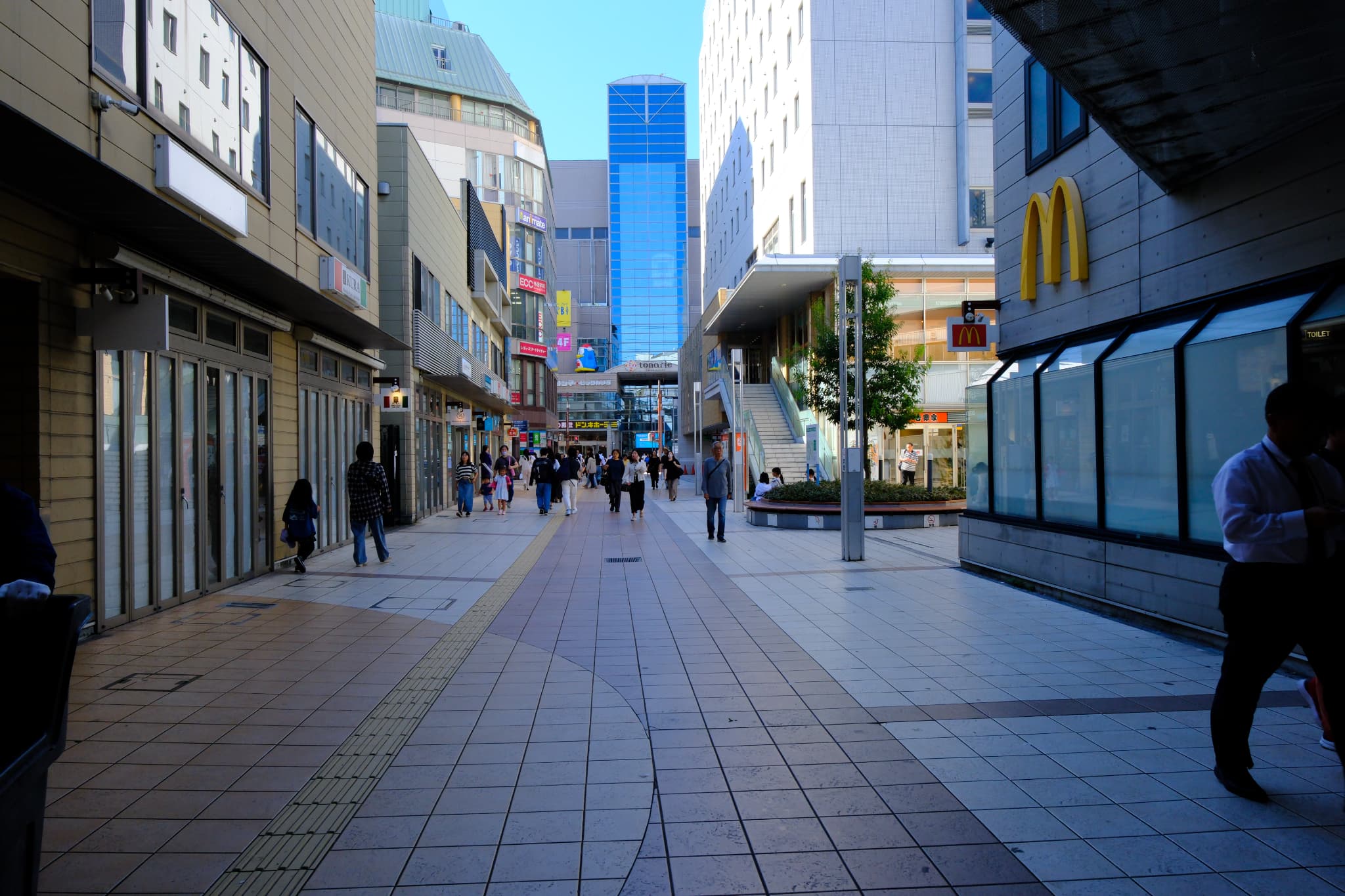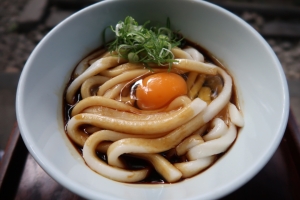Mie Prefecture lies to the west of Aichi Prefecture, bordered by Nara and Kyoto to its west. It is home to the most revered shrine in Japan, where the ancestor of the Imperial Family, Amaterasu Omikami, is enshrined. Mie is also the birthplace of ninjas, specifically in the region of Iga.
One of Japan’s most famous traditional sweets, Akafuku, originates here. Known by nearly every Japanese person, it’s as iconic to them as ramen might be to foreign travelers thinking of Japan.
Mie also boasts breathtaking natural beauty. As of 2024, it remains a bit off the beaten path compared to Tokyo or Osaka, making it a perfect destination to explore at a relaxed pace without the crowds. This hidden gem offers an authentic and tranquil experience, though the locals might be modest about its charm!
Major stations
Here are some key stations in Mie Prefecture. Among them, Yokkaichi Station is said to have the highest passenger traffic. Below are approximate travel times from Tokyo Station and Shin-Osaka Station to these major stations.
These are just examples; make sure to check Google Maps or a train route planner like Norikae Annai to find the best route based on your travel schedule!
Yokkaichi Station
- From Tokyo Station:
Take the Shinkansen to Nagoya Station (approximately 1 hour 40 minutes), then transfer to a rapid train (covered by a regular ticket) for about 30 minutes to Yokkaichi. - From Shin-Osaka Station:
Take the Shinkansen to Nagoya Station (approximately 55 minutes), then transfer to a rapid train (covered by a regular ticket) for about 20 minutes to Yokkaichi.
Note:
Yokkaichi has two train stations: JR Yokkaichi Station and Kintetsu Yokkaichi Station (operated by Kintetsu Railway). They are about a 20-minute walk apart, but the more vibrant area is around Kintetsu Yokkaichi Station.
Tsu Station
- From Tokyo Station:
Take the Shinkansen to Nagoya Station (approximately 1 hour 40 minutes), then transfer to a rapid train (covered by a regular ticket) for about 55 minutes to Tsu. - From Shin-Osaka Station:
Take the subway to Namba Station (approximately 15 minutes), then transfer to the Kintetsu Urban Liner Limited Express from Osaka-Namba Station (a short walk from Namba) for approximately 90 minutes to Tsu.
Kuwana Station
- From Tokyo Station:
Take the Shinkansen to Nagoya Station (approximately 1 hour 40 minutes), then transfer to a rapid train (covered by a regular ticket) for about 20 minutes to Kuwana. - From Shin-Osaka Station:
Take the subway to Namba Station (approximately 15 minutes), then transfer to the Kintetsu Urban Liner Limited Express from Osaka-Namba Station for approximately 2 hours to Kuwana.
Mie Prefecture offers diverse options for travel, with a blend of JR and Kintetsu Railway services providing convenient access to its key locations.

Kintetsu Department Store is located in the station building at Kintetsu Yokkaichi Station!



This is the Fureai Mall area near Yokkaichi Station. Google map
The Fureai Mall and its surroundings are home to a variety of shops and eateries, making it a vibrant spot to explore!




Next, let’s introduce the area around Tsu Station. Tsu Station has a more relaxed atmosphere compared to Yokkaichi Station.



Tsu Station is famous for its eel, and the best part is that the prices are quite affordable! If you visit Tsu Station, trying the eel is definitely recommended!
Introducing Spots in Mie Prefecture
-
Naiku(Inner Shrine)
From Yokkaichi Station, it takes about 1 hour 40 minutes to 2 hours by rapid train (with a regular ticket) or local train.
From Tsu Station, it takes about 1 hour 30 minutes by express train (with a regular ticket) or local train. There are also paid limited express trains available, which can get you there in about 1 hour.
This is Japan’s highest-ranking shrine.
For more details, check out this article: https://eyt-japan.com/naiku/
-
Geku(Outer Shrine)
From Yokkaichi Station, it takes about 1 hour 10 minutes by direct rapid train (with a regular ticket).
From Tsu Station, it takes about 45 minutes by express train (with a regular ticket) and local train. There are also paid limited express trains available, which can get you there in about 40 minutes. The time difference is not significant.
Like Naiku, this is Japan’s highest-ranking shrine. Although Naiku and Geku are located in separate places, they are generally referred to together as “Ise Jingu.”
For more details, check out this article: https://eyt-japan.com/geku/
-
Oharaimachi and Okage Yokocho
Since it is located at the entrance to Naiku, the travel time from Yokkaichi Station and Tsu Station is the same as to Naiku. About 800 meters of traditional Japanese-style souvenir shops, cafes, and restaurants line the area, creating a charming retro atmosphere.
For more details, check out this article: https://eyt-japan.com/oharaimachi_okageyokocho/
-
Iga Ueno Castle and the Iga-ryu Ninja Museum
From Yokkaichi Station, it takes about 1 hour 45 minutes to 2 hours by local train.
From Tsu Station, it takes about 1 hour 35 minutes to 1 hour 50 minutes by local train. If you take a paid limited express, it takes about 1 hour 15 minutes to 1 hour 30 minutes.
Iga is famous as the hometown of ninjas. Ninjas have become globally famous through manga like Naruto and Netflix’s Ninja Family! Iga Ueno Castle and the Ninja Museum are located on the same grounds.
For more details, check out this article: https://eyt-japan.com/igauenocastle-theigaryuninjamuseum/
-
Sakakibara Onsen
From Tsu Station, you can take a bus to reach Sakakibara Onsen.
It takes about 23 minutes by rapid train (with a regular ticket) from Yokkaichi Station to Tsu Station. From Tsu Station, it takes about 1 hour to 1 hour 10 minutes by bus to Sakakibara Onsen.
Known as the “beautiful skin hot spring,” this onsen is famous for its excellent skin benefits.
For more details, check out this article: https://eyt-japan.com/sakakibaraonsen/
Local Food of Mie
Tonteki (Yokkaichi city)

Tonteki features thick-cut pork that is seasoned with a rich, bold sauce. The sauce, which is soy-based with a strong garlic flavor, pairs perfectly with white rice. Of course, it also goes great with a cold beer! You can find this delicious dish at many places around Yokkaichi Station.
Ise Udon (Ise city)

Ise Udon features thick, soft noodles that are served with a rich, dark sauce made from tamari soy sauce. Despite its deep color, the sauce is not overly strong in flavor, with a balanced sweet and savory taste. The noodles absorb the flavorful broth, making each bite incredibly satisfying. While visiting Ise Jingu, you can find Ise Udon served at many places. If you’re exploring the area, it’s a great opportunity to try other types of udon and compare them with Ise Udon!
Akafuku (Ise City)

Akafuku is one of Japan’s most famous wagashi (traditional Japanese sweets) brands. It has a short shelf life of just 2 to 3 days, which is why it’s mainly sold around the Mie Prefecture area. You won’t find it easily in Tokyo! However, there is a branch in Osaka. Akafuku is sold in department stores across Mie Prefecture, and its flagship store is located in Oharamachi and Okage Yokocho, both popular areas near Ise Jingu.
Naga Mochi (Yokkaichi City)

Although Naga Mochi isn’t widely known across Japan, it is absolutely delicious. The sweet is made with a thin layer of mochi filled with red bean paste. While the filling isn’t overly abundant due to the thinness of the mochi, the balance between the mochi and the sweet red bean paste is perfect. Like many traditional Japanese sweets, it has a short shelf life of only 2 to 3 days, so it is rarely available in Tokyo.
Here are two famous stores near Yokkaichi Station where you can try this delicacy:
- Taihaku Naga Mochi – Kinjo-ken:Ideal for those who love a roasted, aromatic flavor
Address: 6-7 Honmachi, Yokkaichi City, Mie Prefecture Google Map
Website: https://tai-haku.com/

- Naga Mochi Sasaeya: Perfect for those who appreciate a simple, traditional taste
Address: 5-13 Kitamachi, Yokkaichi City, Mie Prefecture Google Map
Website: https://nagamochi.co.jp/

Both are great places to enjoy this local treat!
Unagi (Eel) – Tsu City

Tsu City is well-known for its unagi (eel), and many restaurants in the area specialize in this delicious dish. While unagi restaurants can be found across Japan, Tsu stands out for having a particularly high concentration of them. Here are a few notable unagi restaurants around Tsu Station:
- Daikantei Tsu Station West Exit Branch
Address: 261 Otani-cho, Tsu City, Mie Prefecture Google Map
WEB:https://daikanteisiten.com/
- Daikantei Sakae-machi Main Branch
Address: 472 Sakae-machi, Tsu City, Mie Prefecture Google Map
For those willing to venture a bit further from Tsu Station, there are other great options, accessible by bus or train:
- Unagi Cuisine Hashiya
Address: 4-10 Daimon, Tsu City, Mie Prefecture Google Map
WEB:https://www.anotsu.net/hashiya/
- Shintamatei
Address: 5-1 Marunouchi Yōsei-cho, Tsu City, Mie Prefecture Google Map
WEB:https://shintamatei.co.jp/
If you love unagi, these restaurants are definitely worth visiting during your stay in Tsu!






